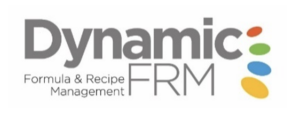By Joe Bailey, Food and Beverage Product Lifecycle Management (PLM) Subject Matter Expert.
One of the biggest challenges with any new business software is getting employees to not only use it, but more importantly embrace and even enjoy it. For many reasons this can be challenging regardless of whether it is a new PLM, ERP, CRM or other application. Some common obstacles include:
- Resistance to change
- Software ease to understand and navigate
- Lack of stakeholder approval
- Misunderstandings on user benefits
- Training options and availability
- Data trust
- Misalignment with department and user needs
- Cybersecurity concerns
User adoption should also be accounted for in the decision making from the initial software selection to the end of software life. Below are just a few ideas to help overcome concerns and accelerate user satisfaction and onboarding.
1. Create Buy-In: When implementing a new tool, have impacted groups and users involved early on with design and business process flow setup. Seize it as an opportunity to get feedback on what is going well, what is not, and what could be improved with current business system and overall processes. Rather than taking what is done today and rebuilding it, use this as an opportunity to get better and design a system that is efficient so that the team wants to use it.
2. Communication: Do the impacted users understand why the new software improves their work? The financial benefits that the software provides for the company are important, but it is equally important for users to see the value it brings to them in a way that they can realize and want to take advantage of. If your employees are not using a system, are you fully achieving the financial ROI gains that were intended?
3. The K.I.S.S. Principle: Working in multiple PLM, ERP, CRM and LIMS systems, it can often be easy to overengineer. Subject matter experts can initially identify software requirements that seem good in principle, but when implemented make things very complicated with little gain. Ask why this is needed and how easy will it be to train users both now and in the future. If you make the process too complicated users will struggle to learn and in some cases give up, especially if you have a high turnover rate or users do not use the system frequently. Keep it simple stupid.
4. Training and Onboarding: Define the training and onboarding plan in a way to ensure users can access it not only for initial training, but also on demand when needed. Documents that can be helpful are data dictionaries, check lists, and other how-to materials, but they can be difficult for users to find information quickly in. Dynamic FRM™, for example, allows users to hover over fields and additional information will pop-up so users know what to enter without having to consult documentation. Training should allow users to easily navigate to specific information for what they are currently doing, and a table of contents or links to resources can help too. There are also robust tools available such as ClickLearn that will record a process inside of systems at the push of a button and instantaneously generate documentation in multiple formats. In addition, ClickLearn will create walkthrough videos with voiceovers that can be made available to users whenever they need it.
5. Support Availability: Ensure users have resources/power users they can call or approach when needed. If something is urgent, have an escalation plan defined if the usual contacts are not available. Also, make sure you maintain a backlog of new ideas for future implementation. This ensures that stakeholder concepts are not forgotten and leaders have visibility to a central list that can be prioritized in the future.
6. Alignment with Business Objectives: Make sure that the software being implemented and used meets the business objectives of the departments using it. I have seen in some organization’s software being used as a means to an end. The only reason a user is in the system is because some part of the company business process cannot be done unless they use the software and they do everything possible to limit their time in the PLM until they absolutely have to. If you can demonstrate to that user the benefit that the software offers to them it can help in creating the desire to use and adopt it.
7. Rollout Plan: For a new software rollout, you need to have a plan and timing for when users will be brought on. Before onboarding a new group of users, make sure everything is ready for them. Have you received their input beforehand and does the new software meet that user group’s intended needs? How will those new users be trained, by who, and will they have the support needed when questions come up and something needs to be fixed? Do the new users onboarding understand what the software does for them verses what it does not?
There are many ideas for how to increase user adoption and we at New Dynamic can help provide guidance and direction to help improve your software implementation with Dynamic FRM™.
Working with New Dynamic
New Dynamic, LLC is a certified Microsoft Solutions Partner and creator of Dynamic FRM™, a formula and recipe management solution that helps food and beverage producers eliminate spreadsheets and inefficient processes. Built on a familiar Microsoft platform, the solution naturally integrates with the Microsoft Office stack. Visit www.dynamicfrm.com to learn more.
Contact Us today to transform your sales productivity and customer buying experiences.
Join the Dynamics FRM™ Community
If you found this blog helpful, subscribe below to receive our monthly updates.







